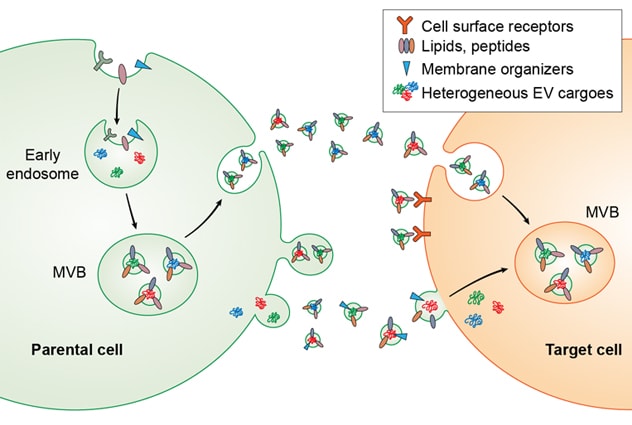Jan. 15, 2021
Diabetes mellitus is a chronic disease affecting over 450 million adults worldwide with an annual health expenditure of over $750 billion. By the year 2045, diabetes incidence is expected to reach up to 700 million adults; thus there is a critical need for new preventive and therapeutic strategies to lessen both the prevalence and the financial burden of diabetes and associated ailments.
Type 1 (T1DM) and type 2 (T2DM) diabetes are complex multifactorial diseases manifested by a loss of either the function or the number of insulin-producing pancreatic β cells mediated by autoimmune destruction (T1DM), or by progressive systemic insulin resistance (T2DM). Chronic exposure to various diabetogenic factors including systemic inflammation, lipotoxicity and glucotoxicity has been shown to impede normal insulin secretory responses through loss of insulin synthesis and secretion, decrease in β cell numbers, and dedifferentiation.
Recent evidence suggests that β cells play a more critical role in their own active demise than previously appreciated, making them prime targets for therapeutic intervention. However, what remain unknown are the exact physiological and molecular mechanisms that contribute to the overall loss of β cell function and mass in diabetes.
Coordinated intercellular communication between differing cell and tissue types is essential for the maintenance of endogenous physiological processes. This includes the β cells of the pancreatic islets, which rely on autocrine and paracrine exchange of cellular factors (for example, hormones, peptides, neurotransmitters) for control of glucose homeostasis. Declining β cell functionality or mass during diabetes progression has been shown to be attributed to a complex intercellular dialogue between the cells of the pancreatic islets and other peripheral cells and tissues.
"My interests lie in deciphering the mechanisms involved in altered islet cell communication during the pathogenesis of diabetes, with the overarching goal to utilize this knowledge for the development of novel therapeutic strategies and early diagnostic and prognostic biomarkers to combat diabetes," explains Naureen Javeed, Ph.D., Physiology and Biomedical Engineering, at Mayo Clinic in Rochester, Minnesota.
The role of extracellular vesicles
Recent evidence suggests a novel means of cellular cross-talk through the exchange of small lipid membrane-derived nanovesicles termed extracellular vesicles (EVs). The role of EVs in both normal and disease pathological states has been historically underappreciated, as EVs were initially deemed "cellular garbage cans" or a means to selectively dispose of unwanted cellular material. Secreted by most cell types, these biologically produced nanovesicles have now been shown to harbor a vast array of biologically active cargoes including DNA and RNA species, proteins, lipids, and metabolites.
Classification of EVs consists of three general subpopulations that differ based on method of biogenesis and cargo. They also differ in size:
- Small EVs (exosomes, 30 to 150 nm in size)
- Medium and large EVs (microvesicles, 100 to 1,000 nm)
- Apoptotic bodies (1,000 to 5,000 nm)
Liberación y transferencia de la vesícula extracelular

Liberación y transferencia de la vesícula extracelular
Liberación de la vesícula extracelular y transferencia de la célula parental a célula objetivo. CMV: cuerpo multivesicular. Basado en endocrinología.
EVs are known to participate in both short- and long-range intercellular communication through exchange of bioactive cargoes to targeted cells. Once secreted by the parental cell, EVs can target recipient cells through several mechanisms including direct fusion to the plasma membrane, direct binding of EV surface ligands to cell surface receptors and internalization through the endocytic pathway.
Because EV content is often reflective of the cell of origin and therefore its pathophysiological state (disease onset or cellular stressors), the exchange of altered EV content has been implicated in the propagation of various diseases including cancer, cardiovascular disease, Alzheimer's and more recently diabetes.
With the ubiquitous nature of both the production and the secretion of EVs by most cell and tissue types coupled with the apparent role of EVs in intercellular communication, it is foreseeable that EVs contribute to the multiorgan regulation of insulin secretion and glucose homeostasis. Several lines of evidence have implicated EVs in the regulation of β cell function and survival in the pathogenesis of diabetes. In particular, EV intercellular cross-talk dynamics have been mostly documented between β cells and other pancreatic islet cells or β cells and immune cells.
Additionally, EVs from peripheral tissues including adipocytes, skeletal muscle, hepatocytes and vascular endothelium have been shown to modulate β cell function and apoptosis and proliferation. Disruptions in the islet microenvironment due to diabetogenic stressors including proinflammatory cytokines, lipotoxicity, glucotoxicity and amyloid aggregates have been shown to modulate β cell EV cargo (enrichment of microRNAs and protein cargo) and induce functional alterations.
Interest in the clinical utility of EVs has grown due to their abundance in human biofluids, implication in several physiological processes and distinct cargoes that can reflect pathological disease progression. In diabetes, accurate monitoring of β cell health and responses to therapy at early stages will aid in identification of preventive and therapeutic strategies for the disease.
For example, identification of distinct β cell-derived cargo in circulating plasma EVs may serve as a minimally invasive early diagnostic indicator of progressive β cell dysfunction in diabetes.
Dr. Javeed's research on extracellular vesicle biology in diabetes was published in Endocrinology in 2019. "My goal is to use this knowledge to design clinically effective EV-based strategies to monitor β cell function in addition to novel regenerative strategies aimed at targeting toxic β cell EV cargo to improve overall β cell health and vitality for people with diabetes," says Dr. Javeed.
For more information
Contact Naureen Javeed, Ph.D., for more information.
Javeed, N. Shedding perspective on extracellular vesicle biology in diabetes and associated metabolic syndromes. Endocrinology. 2019;160:399.